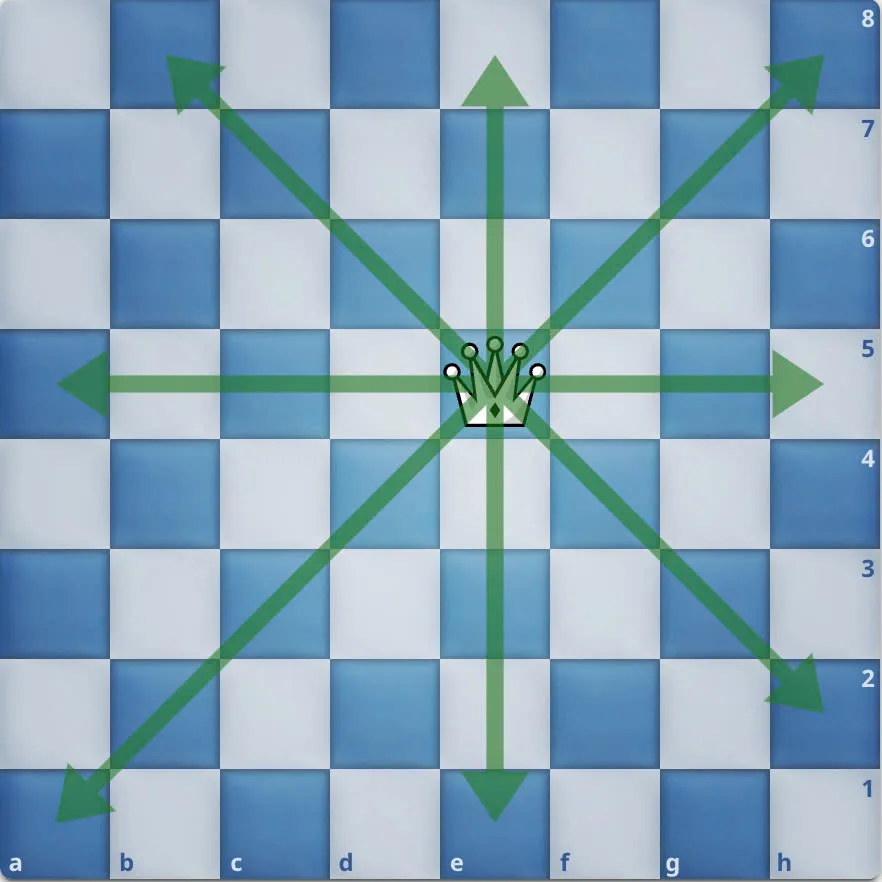Ever wondered why losing your queen feels like losing your favorite snack at a chess party? It’s all about the points, my friend. Chess assigns every piece a value, and these points don’t just reflect how powerful a piece is. They influence strategies, trades, and endgames. Let’s break it down with the kind of flair chess deserves.
1 Point: The Humble Pawn
Ah, the pawn. It’s the bread-and-butter of chess, the worker bee of the 64-square hive. Worth just 1 point, it might not look like much, but don’t underestimate its potential. Pawns can:
- Control crucial squares.
- Clear paths for bigger pieces.
- Transform into queens (the ultimate glow-up).
Trading a pawn for a knight? Great! Trading a pawn for a queen? Awesome. Always keep an eye on how these little guys shape the battlefield.
3 Points: Knights and Bishops (The Dynamic Duo)
These pieces share a point value, but they bring completely different vibes to the board.
- The Knight: Worth 3 points, the knight is the parkour champion of chess. It leaps over obstacles, lands on forks, and delivers checkmates when your opponent least expects it. Bonus points for being the only piece that makes L-shaped moves. It’s the quirky artist of the chess family.
- The Bishop: Also 3 points, the bishop glides diagonally across the board with laser-like precision. If you’ve got a pair of them (one on light squares, one on dark), they become a power couple capable of slicing through enemy lines like butter.
So, knight or bishop. Who wins? It depends on the position. Knights thrive in closed games, while bishops love open ones.

5 Points: The Mighty Rook
The rook is the heavyweight champ of the chess midgame, worth a solid 5 points. While it starts boxed in like a teenager grounded for bad grades, it becomes a monster when unleashed. Rooks dominate open files and coordinate beautifully in pairs. Fun fact: in endgames, a rook can often handle an entire army of pawns. Talk about value!
9 Points: The Queen (AKA Chess Royalty)
The queen is the Ferrari of chess because she’s fast, powerful, and dominates any open road, or in this case, open board. At 9 points, she combines the powers of a rook and a bishop, dominating both the straight and diagonal lines. But like a Ferrari, she’s high-maintenance: send her into danger without backup, and you’ll regret it faster than you can say checkmate.
That said, treat her like royalty. Don’t send her into battle too early, or you might find her surrounded by angry pawns with pitchforks.
Priceless: The King
Surprised the king isn’t on the list? That’s because the king’s value is existential. Lose your king, and the game ends, no matter how many queens you’ve got. Protect him like your life depends on it. Because in chess, it kind of does.
Number of squares a chess piece can control

1. Pawn
- Normal Position: A pawn controls 2 squares diagonally ahead of it.
- Edge of the Board: A pawn controls 1 square diagonally ahead if it’s on the edge (e.g., a-file or h-file).
2. Knight
- Center of the Board: A knight controls 8 squares.
- Edge of the Board: A knight controls fewer squares (4-6), depending on how many of its potential moves are off the board.
- Corner of the Board: A knight controls 2 squares.
3. Bishop
- Center of the Board: A bishop controls up to 13 squares (the total number of squares on its diagonals minus its current square).
- Edge of the Board: A bishop controls fewer squares (7-13), depending on its position.
- Corner of the Board: A bishop controls 7 squares.
4. Rook
- Any Position: A rook controls up to 14 squares (the total number of squares on its rank and file minus its current square).
- Edge or Corner: The number remains the same (14), as its movement isn’t reduced by edges.
5. Queen
- Center of the Board: A queen controls up to 27 squares (the sum of a rook’s and a bishop’s potential controls).
- Edge or Corner: The number decreases depending on its reduced diagonal options.
6. King
- Center of the Board: A king controls 8 squares.
- Edge of the Board: A king controls 5 squares.
- Corner of the Board: A king controls 3 squares.
Trading Up or Trading Down
The point system is a guide, not a law. Trading a knight (3 points) for a rook (5 points)? Good deal. Trading a queen (9 points) for two rooks (10 points total)? Maybe worth it, depending on the position.
The art of chess isn’t just about points, though. It’s about understanding when to trade, when to sacrifice, and when to push your pawns to glory.
Final Thoughts
Chess is a game of balance, and the point system helps you weigh your options. But don’t let the numbers completely rule you. Sometimes the best moves are the ones that break the rules. Just don’t go trading your queen for a bishop unless you’ve got a very good plan.
I’m the senior editor of Attacking Chess, a keen chess player, rated above 2200 in chess.com.


5 thoughts on “Chess Points of Pieces: Why Your Queen is Basically a Ferrari”
Comments are closed.